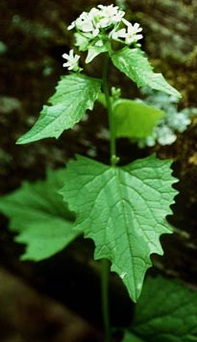
Photo: John Fielding.
By Chloe Kiple
For consumers looking for more natural food, the answer might be right in their backyards.
Plant foraging, or harvesting wild edibles like fruits, vegetables and nuts, is an ancient practice with a slew of benefits.
“There are literally tens of studies demonstrating that they’re more nutrient-dense than cultivated plants,” says Arthur Haines a Maine foraging expert and guide. “While we have a surplus of calories in the U.S. we do not have a surplus of micronutrients. It’s chronic, low-level malnourishment.”
To get started, a forager needs to be equipped with some plant knowledge from a guidebook, an app or a local expert.
Forager John Holzwart of Wisconsin was initially attracted by the low cost of wild food harvesting when he was 18. “I looked around me and I was pretty excited about the free food as a young bachelor living on pizza and beer.”
Holzwart recommends a sustainable approach to the hobby. He follows the general principle of taking only 20 percent of what he finds in any given patch so that he doesn’t hurt plant populations.
For Haines, responsible foraging is a way to combat national problems like deforestation and the overharvesting that come from producing typical American groceries.
“The way we interact with environment is like this egocentric view on the world: It’s ours to have,” says Haines.
In some cases, foragers are encouraged to harvest as much of some plants as they can.
“There’s a long list of species where you basically can’t do any environmental damage” says St. Cloud State (Minnesota) University biology Professor Bill Cook. “You can only help the environment by foraging certain species. There are quite a lot of wild edible plants that are abundant weeds in farms and people’s gardens.”
That list includes garlic mustard, an invasive species imported from Europe. The plant spreads quickly, covering the forest floor and sucking up nutrients intended for native plant species. It’s ravaged its way through the Midwest and is difficult to stop.

Garlic mustard, Photo: Wisconsin Department Natural Resources
Foragers can use garlic mustard as a garnish for soups and salads.
“It’s best used as a spice,” says Cook. “The leaves and stems have a pungent taste.”
For the most part, foraging is harmless but becomes a problem when foragers harvests plants for commercial sale, according to the Wisconsin Department of Natural Resources. As long as foragers stay within the legal limits, foraging can be fruitful.
Holzwart encourages people getting into the hobby to do their research before they forage. That means using three to five sources to identify plants. Without proper verification, foragers risk eating poisonous plants.
“There was a woman who wanted to make a green smoothie, so she took what she thought were mullen leaves, but they ended up being foxgloves, and she died,” says Holzwart.
“People get caught up in this trendy thing. I don’t want people to live in fear of plants, but I do want people to do their homework,” he says.
Editor’s note: In Pursuit of Plants is a series of stories about the wild plant trade in the Great Lakes region.